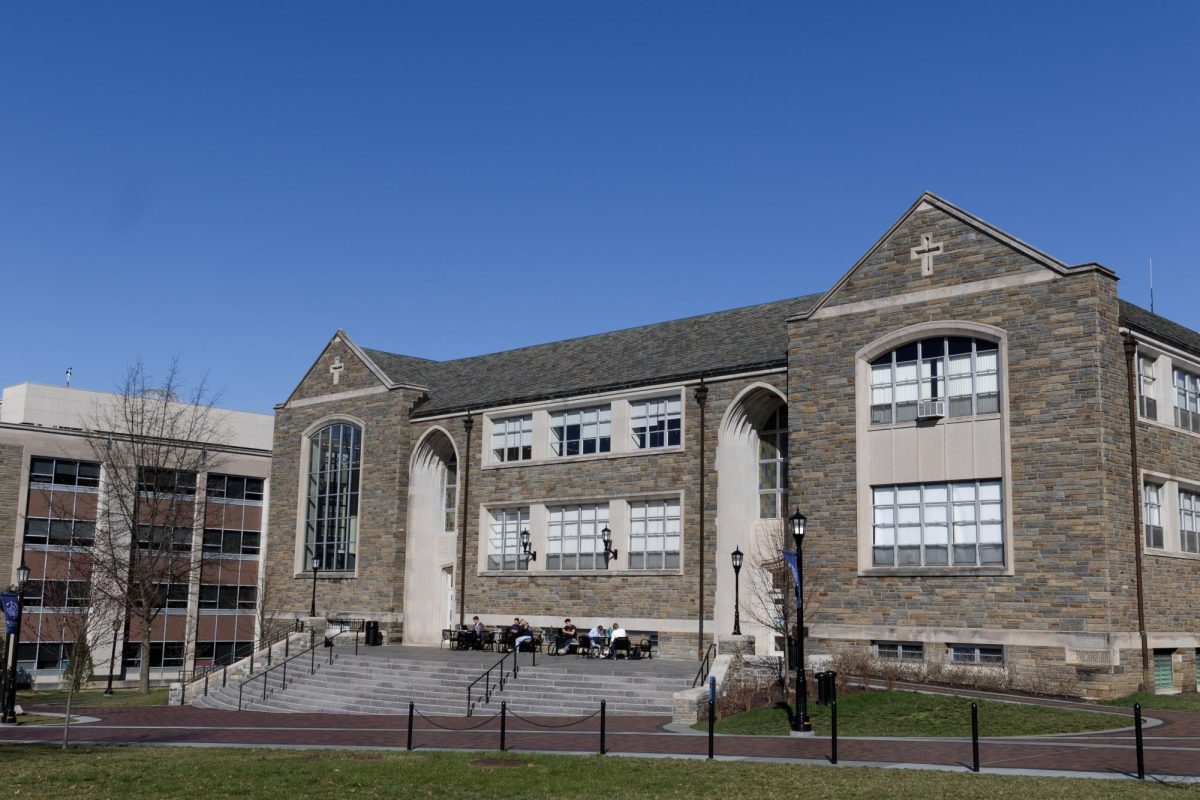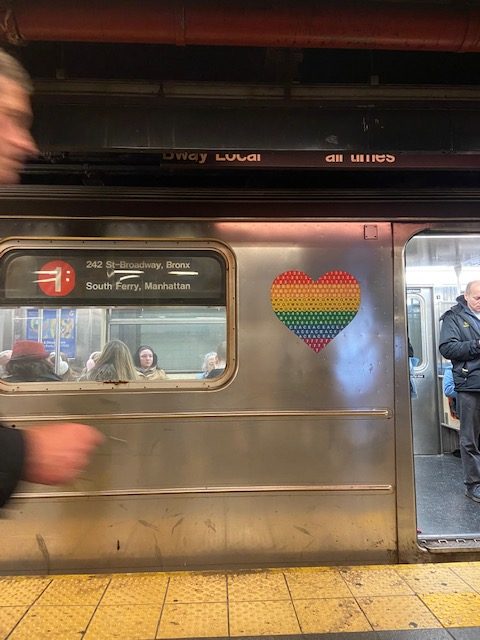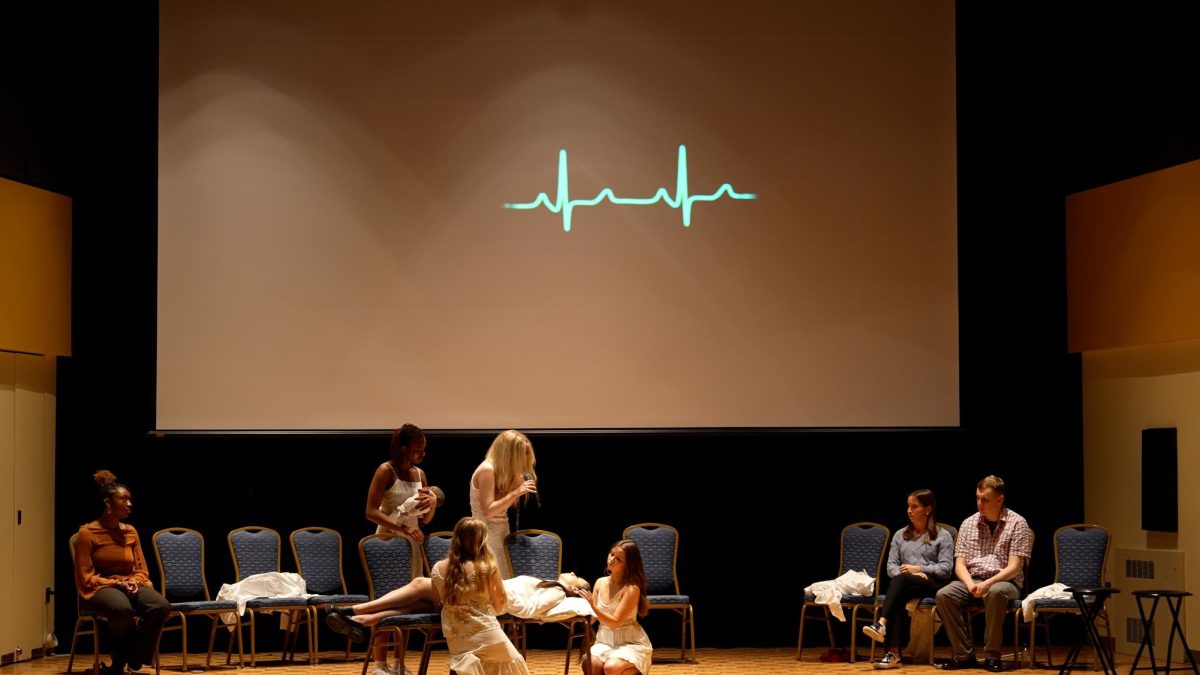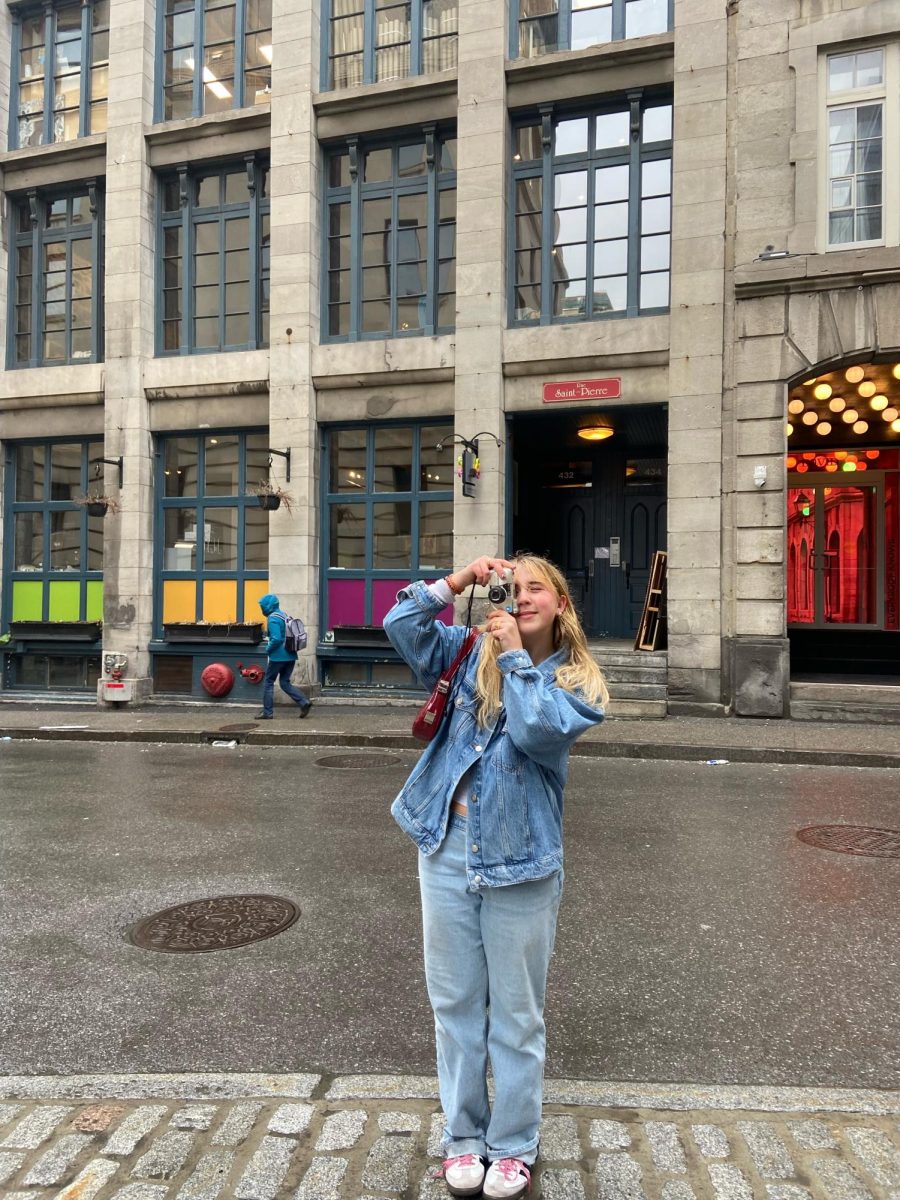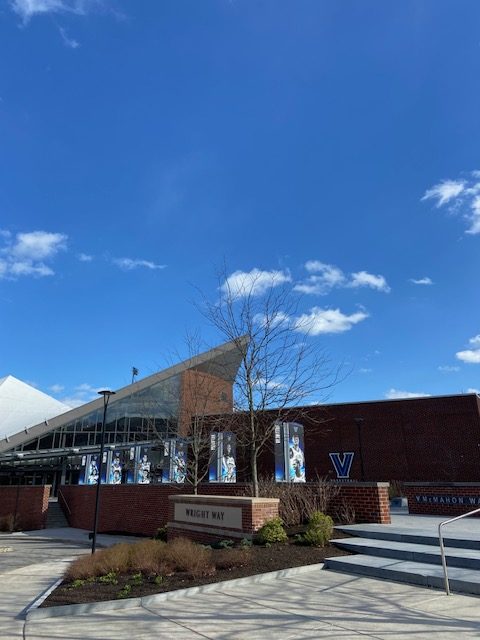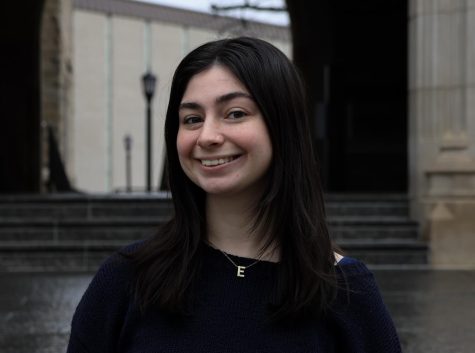On Wednesday, Feb. 5, The Thanksgiving Play opened to the Villanova community and opened to the general public the following day. This satirical comedy ran in the Court Theater in the Mullen Center until Sunday, Feb. 16. Written by Larissa Fasthorse, The Thanksgiving Play was adapted to the Villanova Theatre by director Tanaquil Márquez.
The play centers around four white individuals attempting to navigate a culturally-conscious Thanksgiving production to be put on at an elementary school. Lucy Horton stars as enthusiastic white savior school teacher Logan, and Jeff Hunsicker plays her equally “woke” partner, Jaxton. Logan is outfitted with a large apron-looking floral dress, while Jaxton looks exactly how one would expect a middle-aged yoga instructor to appear.
The two commence the play’s humor, bantering about Logan’s distaste for cheese, as she is a vegan, of course. The pair tangoes into a dispute about political and social ethical morality in a way that quickly reveals to audience members their lack of real-world awareness. Logan reveals her hopes to put on a culturally-aware Thanksgiving play, hoping it will save her from being fired from her teaching job. Using a BIPOC feminist grant she earned, she hires an indigenous actress from Los Angeles to play the protagonist.
The play next introduces Caden, an elementary school history teacher played by Troy Gartner. An awkward and fumbling man, Caden is hired to use his knowledge of indigenous history to advise the performance. With the cast of characters all assembled, a curveball is thrown into the situation: glamorous Hollywood actress Alicia, played by Susan Betten.
Alicia struts into the classroom with her Valley Girl accent, stiletto heels and a vapid sense of unawareness. Soon thereafter, the crew realizes that she has lied about being an indigenous woman and takes “ethnic” headshots to attract more roles. From there, much confusion and shock follows as Logan and the gang struggle to plan out their performance. After turbulent trials and tribulations, Logan learns that the only way to put on a culturally-appropriate indigenous portrayal with four white people is to not put one on.
Aside from the main plot line, the play also included intermittent scenes of disturbing parodies of Thanksgiving songs for elementary children. In perhaps the most off-putting moments of the production, these scenes portrayed culturally-inappropriate or even graphically-violent stereotypes of indigenous peoples. The four players took leave from their main roles to act out these disturbing parodies, reminding viewers of the perpetual myth of our first Thanksgiving.
Beyond the performance, this Villanova production made great efforts to bolster the purpose and meaning of their play with research. To aid viewers to better understand the history of Thanksgiving, the production provided an education guide. Given the University’s location on the land of the Lenni Lenape tribe, it holds an especially important significance to the Villanova community. To acknowledge this, the production featured an exhibit about indigenous history outside of the Court Theater at the Mullen Center after its debut on Feb. 5.
This brutal satire tackles perceptions of the tradition we celebrate every year. It leaves viewers with an uneasy recognition of the tainted nature of this holiday and its colonial legacy. Even more than that, it shows that implicit biases are enough to thwart decent intentions.
Villanova Assistant Professor of Performance, Hansel Tan, describes the unique artistic choices the Villanova production made to bring The Thanksgiving Play to life on stage.
“There are plenty of exciting theatrical surprises in Villanova Theatre’s staging of Thanksgiving Play that definitely brought a visual ‘wow’ factor that I absolutely did not expect,” Tan said. “In one stunning moment, a waterfall of blood streamed down the windows and bulletin board displays, as if the ‘woke’ mythology of Thanksgiving narratives collapsed, making way for the unspoken historical realities to bleed through.”
For others, this satirical plotline takes creative risks, and doesn’t always leave viewers feeling satisfied with the takeaway. Senior Shay McDowell shared her take on this production.
“The actors really gave their all in their performances, but I could not become invested in the plot,” McDowell said. “It left me feeling unsatisfied, but I also didn’t want to watch any more.”
From another perspective, the disturbing nature of this performance enhanced the meaning of the play. Senior Will Thompsen commented on his experience viewing The Thanksgiving Play.
“There was a purposeful uncomfortableness that made scenes hard to watch, but overall it was an enjoyable and thought provoking show,” Thompsen said.
Whether leaving viewers deeply unsettled or utterly engaged, it sparks important conversations on our campus. Professor Hansel Tan shares what he hopes audiences took away from this particular staging of The Thanksgiving Play.
“I hope audiences walk away with a sense of disease and ambiguity at our contemporary efforts to over-simplify or water-down the complexities of colonizer and Native American dynamics,” Tan said. “More importantly, The Thanksgiving Play pushes us to meditate on the proverbial and literal ‘emptiness’ that the show ends with, albeit a metaphorical surrogate for the glaring absence of Native American voices to pronounce their side of history, past and present.”
To learn more about The Thanksgiving Play or upcoming productions from the Villanova Theatre, please visit https://villanovatheatre.org/2024-2025-season/ .

